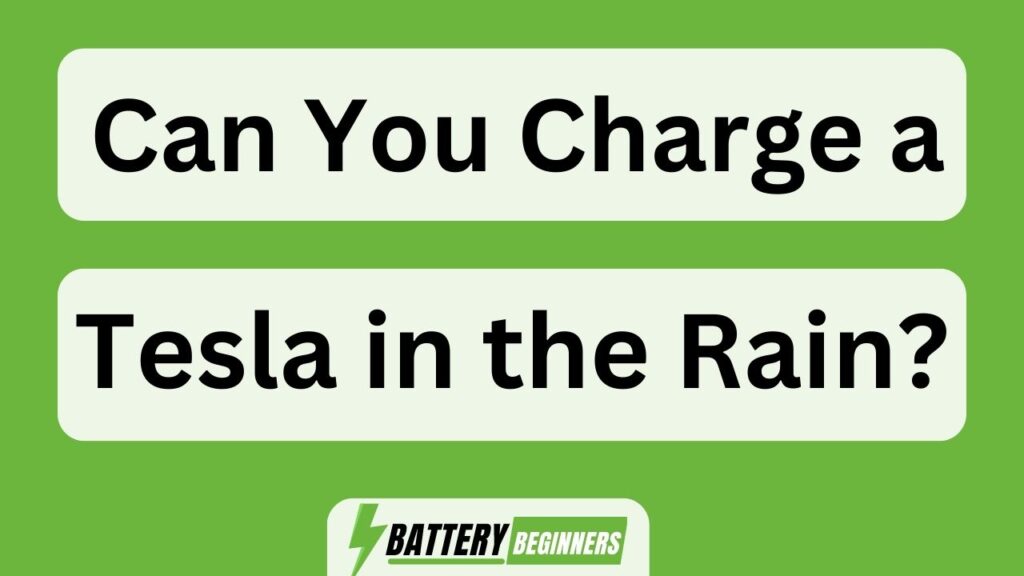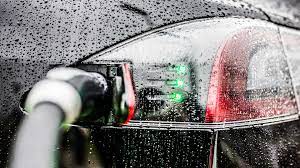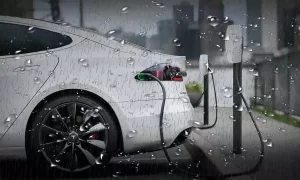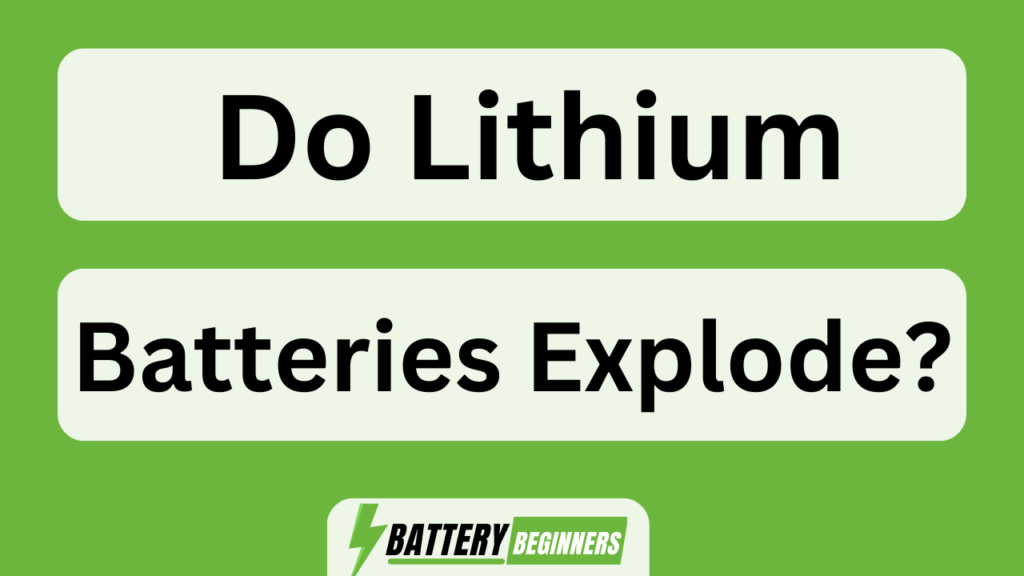As raindrops fall on the sleek surface of a Tesla, an intriguing question arises: Can you charge a Tesla in the rain?
In this article, we delve into the safety implications and technical considerations surrounding charging electric vehicles in wet conditions.
Exploring the waterproof design of Tesla chargers and debunking common myths, we provide valuable insights on protecting your Tesla during rainy day charging.
With Tesla’s official recommendations and a glimpse into future waterproof EV charging technology, we aim to answer the ultimate question: is charging your Tesla in the rain feasible or not?
Key Takeaways OF Can You Charge A Tesla In The Rain?
- Advancements in waterproof charging technology make it increasingly possible and safe to charge a Tesla in the rain.
- Charging a Tesla in the rain can have benefits such as cleaning off dust and debris, protecting against water damage, and enhancing vehicle efficiency.
- There are drawbacks and precautions to consider, including potential power interruptions, impact on charging time and efficiency, and the risk of corrosion and component degradation over time.
- Tesla provides valuable recommendations and guidelines for charging in wet conditions, emphasizing the importance of safety, efficiency, and following manufacturer guidelines.
The Safety of Charging Electric Vehicles in Wet Conditions
Charging electric vehicles in wet conditions raises concerns regarding the safety of the process. One major concern is the impact of rain on charging speed. Rainwater can potentially affect the electrical components, leading to a decrease in charging efficiency.
However, modern electric vehicle chargers are designed to withstand wet conditions. Waterproof charging stations have been developed to protect both the charger and the vehicle from any potential water damage. These stations are equipped with advanced waterproofing technologies, such as sealed connectors and protective covers for electrical outlets.
Additionally, Tesla chargers feature a waterproof design that ensures safe and efficient charging even in rainy weather. Understanding the waterproof design of Tesla chargers is essential to ensure their proper functioning and overall safety during wet conditions.
Understanding the Waterproof Design of Tesla Chargers
The waterproof design of Tesla chargers ensures their functionality and protection from external elements. This design feature is crucial for the safe and efficient charging of Tesla vehicles, especially in wet conditions.
The waterproofing of Tesla chargers includes several key components:
- Sealed connectors: Tesla chargers are equipped with sealed connectors that prevent water from entering the charging system.
- Weather-resistant casing: The chargers are encased in a weather-resistant housing that shields them from rain, snow, and other environmental factors.
- Protective coating: A protective coating is applied to the internal circuitry of the charger to safeguard it against moisture damage.
These features not only enable Tesla owners to charge their vehicles safely in wet conditions but also contribute to the overall longevity and reliability of the charging infrastructure.
By incorporating these waterproofing measures into their design, Tesla ensures that users can benefit from uninterrupted charging even during heavy rainfall or inclement weather conditions.
Transitioning into the subsequent section about ‘rain vs. water damage: exploring the difference’, it is important to understand how these waterproof features mitigate potential risks associated with charging electric vehicles in wet environments.
Rain vs. Water Damage: Exploring the Difference
To differentiate between rain and water damage, it is essential to understand their contrasting effects on the functionality and integrity of electrical systems.
When it comes to charging a Tesla in the rain, the waterproof design of Tesla chargers ensures that they can safely operate in wet conditions without causing any harm to the vehicle or user. These chargers are specifically designed with protective measures such as sealed connectors and insulation materials to prevent water intrusion.
However, while rain itself may not pose a direct threat to the charging process, other potential hazards like flooding or submerging the charger in water can result in serious damage. Therefore, it is important to exercise caution and avoid using charging stations during such conditions.
Understanding these differences highlights the importance of proper electrical grounding for safe and efficient charging operations.
The Importance of Proper Electrical Grounding
Proper electrical grounding plays a crucial role in ensuring safe and efficient charging operations. It is essential to follow proper grounding techniques and electrical safety precautions when charging a Tesla in the rain.
To illustrate this, consider the following three items:
- Grounding electrodes: Installing multiple grounding electrodes, such as ground rods or plates, helps establish a reliable connection between the charger and the earth.
- Equipment grounding conductor: The use of an equipment grounding conductor, typically made of copper or aluminum, provides a low-resistance path for fault currents to flow safely to the ground.
- Bonding connections: Properly bonding all conductive parts of the charging system reduces voltage differences that could lead to electric shock hazards.
By adhering to these proper grounding techniques and electrical safety precautions, Tesla owners can charge their vehicles safely even in rainy conditions.
Transitioning into common myths and misconceptions about charging Teslas in the rain…
Common Myths and Misconceptions about Charging Teslas in the Rain
One common misconception regarding the charging of electric vehicles during wet weather conditions is that it is unsafe or not possible to charge a Tesla in the rain. However, this is a myth that needs to be debunked.
Teslas are designed with safety measures in place to ensure that charging can be done safely even in rainy weather. The charging ports and connectors are specifically designed to be waterproof and protect against any potential moisture damage. Additionally, the electrical systems of Teslas are well-insulated and equipped with proper grounding techniques, which further minimize any risk of electrical hazards during wet conditions.
It is important for Tesla owners to understand these facts and not let misconceptions prevent them from utilizing their vehicles’ full potential.
In the next section, we will provide some tips for safe and efficient charging in wet weather, further enhancing your understanding of this topic without writing ‘step’.
Tips for Safe and Efficient Charging in Wet Weather
Adequate shelter and protection from the elements can contribute to safer and more efficient charging of electric vehicles during wet weather conditions. When it comes to charging a Tesla in the rain, there are proper techniques that need to be followed to minimize potential risks. Here are some tips for safe and efficient charging in wet weather:
- Use a waterproof cover or carport to shield the vehicle and charger from rain.
- Ensure that the charging cable is properly insulated and protected from water.
- Position the charger away from puddles or any areas prone to flooding.
By following these guidelines, you can protect your Tesla and ensure a smooth charging experience even in rainy conditions.
Transitioning into the subsequent section about ‘rainy day charging: how to protect your Tesla,’ it is important to take additional measures to safeguard against water damage and maintain optimal performance of your electric vehicle.
Rainy Day Charging: How to Protect Your Tesla
When charging your Tesla in wet weather, it is essential to take necessary precautions to protect both the vehicle and yourself. One way to ensure safety is by using waterproof charging cables specifically designed for electric vehicles. These cables are specially insulated and sealed to prevent any water damage or electrical hazards.
Additionally, rainwater harvesting can be a viable option for charging your Tesla during rainy days. By collecting rainwater and utilizing it as a sustainable resource, you can reduce reliance on traditional power sources. However, it is crucial to follow local regulations regarding rainwater harvesting and ensure that the collected water meets necessary standards for safe usage.
Understanding these methods of protection and harnessing renewable resources allows for efficient charging even in adverse weather conditions.
Transitioning into Tesla’s official recommendations for charging in wet conditions…
Tesla’s Official Recommendations for Charging in Wet Conditions
Tesla’s official recommendations for charging in wet conditions include ensuring that the charging connector and port are dry before plugging in to avoid any potential electrical hazards. It is crucial to protect the electrical components from water exposure to prevent short circuits or other damage. Tesla’s rainproof charger technology plays a significant role in this aspect by providing a waterproof design that safeguards against moisture ingress during charging sessions. The company has taken measures to enhance the waterproofing capabilities of their chargers, allowing them to withstand heavy rain without compromising safety.
Looking ahead, advancements are being made in the development of waterproof electric vehicle charging technology. This will further improve the reliability and convenience of charging electric vehicles, ensuring seamless operation even under challenging weather conditions.
The Future of Waterproof Electric Vehicle Charging Technology
Tesla’s Official Recommendations for Charging in Wet Conditions provided valuable insights into the precautions that should be taken when charging an electric vehicle (EV) in the rain. However, as technology continues to evolve, so does the development of waterproof charging solutions.
Advancements in EV charging have led to the emergence of innovative waterproof charging technology that ensures safe and efficient charging even in wet conditions. These advancements include specialized connectors, protective insulation, and enhanced sealing mechanisms to prevent water ingress during the charging process. Manufacturers are continuously improving these technologies to meet the growing demand for reliable and weather-resistant EV chargers.
With these advancements, it is becoming increasingly feasible to charge a Tesla or any other EV safely in rainy weather conditions.
In conclusion: charging your Tesla in the rain – yes or no? Let us delve further into this question by examining additional factors and considerations.
Next Subtopic: ‘Conclusion: Charging Your Tesla in the Rain – Yes or No?’
Conclusion: Charging Your Tesla in the Rain – Yes or No?
In summary, the advancements in waterproof charging technology for electric vehicles have made it increasingly feasible to safely charge a Tesla or any other EV in rainy weather conditions. There are both pros and cons to consider when charging a Tesla in the rain.
On the positive side, waterproof charging systems provide protection against water damage, ensuring safety during the charging process. Additionally, rainwater can clean off dust and debris from the vehicle’s surface, enhancing its overall efficiency.
However, there are also some drawbacks to be aware of. Rainfall can affect the charging time and efficiency of the vehicle due to potential power interruptions caused by wet connectors or cables. Furthermore, excessive exposure to water may lead to corrosion and degradation of electrical components over time.
Therefore, while it is possible to charge a Tesla in the rain with modern waterproof technology, precautions should still be taken to minimize potential risks and ensure optimal performance.
Frequently Asked Questions
Are there any risks of electric shock while charging a Tesla in the rain?
When charging a Tesla in the rain, there are risks of electric shock. To ensure safety, it is important to take necessary precautions such as using a properly grounded outlet and keeping the charging equipment dry.
Can charging a Tesla in the rain damage the vehicle’s electrical components?
Charging a Tesla in the rain does not damage its electrical components. The vehicle’s charging safety systems are designed to protect against water ingress, ensuring rainwater protection during the charging process.
Are there any precautions that should be taken when charging a Tesla in wet weather?
Precautionary measures and best practices should be followed when charging a Tesla in wet weather. These may include ensuring the charging equipment is properly insulated, keeping all connections dry, and avoiding standing water to prevent potential damage to the vehicle’s electrical components.
What are some common misconceptions about charging Teslas in the rain?
Common misconceptions regarding charging Teslas in the rain include safety concerns, but these are largely unfounded. Tesla’s charging systems are designed to be weather-resistant and undergo rigorous testing to ensure safe operation even in wet conditions.
Is there any waterproof technology currently available for electric vehicle charging?
Waterproof charging solutions for electric vehicles are currently available, enabling safe charging in wet conditions. However, there is ongoing research and development to improve these technologies and explore potential future advancements in waterproof charging systems for increased efficiency and convenience.
Conclusion
In conclusion, charging a Tesla in the rain is not only possible but also safe when following proper precautions. The waterproof design of Tesla chargers ensures protection against water damage. Grounding plays a crucial role in avoiding electrical hazards.
Debunking common myths, it is evident that charging Teslas in the rain does not pose any significant risk. Adhering to Tesla’s official recommendations and taking necessary protective measures can safeguard your vehicle during rainy day charging.
As technology advances, we can expect the future to bring even more advanced waterproof electric vehicle charging solutions. So, why let a little rain stop you from powering up your Tesla?






